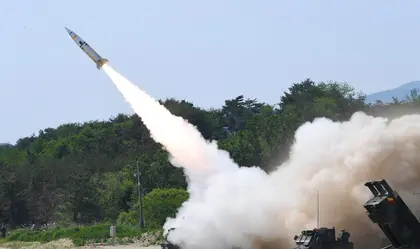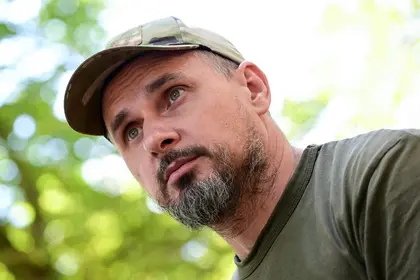Russian soldiers are dying in record numbers. As the Kremlin’s troops make massed attacks into the teeth of Ukrainian killer drones backed by new deliveries of artillery shells, the numbers have skyrocketed, according to official Kyiv counts, reports from Ukrainian combat units, and independent analysts.
A Kremlin offensive launched in early May into Ukraine’s northeastern Kharkiv region appeared to be the epicenter of the heavy Russian losses, with dead and wounded across all fronts numbering more than 1,000 men every 24 hours for the past two weeks, according to Armed Forces of Ukraine (AFU) official estimates.
JOIN US ON TELEGRAM
Follow our coverage of the war on the @Kyivpost_official.
According to analysis compiled by Ragnar Gudmundsson, a leading tracker of losses on both sides of the Russo-Ukrainian War, the first half of May 2024 saw counts of Russian dead and wounded reach levels exceeding any two week period for the past 12 months, and likely for the entire war.


Deadly Shooting After an Argument Between Ukrainian Troopers in Kharkiv Region
Gudmundsson and other independent war analysts caution that Ukrainian army estimates of Russian losses might be inaccurate or biased. Kyiv military spokesmen said that compiled totals of Russian loss estimates are rigorously vetted for accuracy, and for a practical matter a Russian loss is never registered unless compelling evidence – in almost all cases drone video – confirms the kill claim is real.
Recent combat reports, particularly from Ukraine’s northeastern Kharkiv region, appear to be bearing out the Ukrainian army estimates, telling of advancing Russian forces wading into a maelstrom of artillery and FPV strikes. And where they are gaining ground, they do so at the price of heavy casualties.

According to a May 15 UNIAN news agency report citing sources in partisan groups operating behind Russian lines, two major Kremlin combat formations deployed to the Kharkiv sector – the 138th Motor Rifle Brigade and 7th Separate Motor Rifle Regiment, both of 18th Motor Rifle Division – took 70 percent losses in less than two weeks and were rendered combat ineffective.
Ukrainian news reports in March identified the 138th as a formation drawing recruits from Russia’s prison system to form high-risk assault units for ground assaults in Ukraine. In January, Ukraine’s national spy agency, the SBU, identified of the 7th as complicit in war crimes against Ukrainian civilians in the Kharkiv region in 2022. Both were reportedly pulled from the Kharkiv battlefield.

Ukrainian soldier and milblogger Stanislav Osman, author of the popular Hovoryat Snaiper channel, in posts on the Kharkiv sector on Tuesday and Wednesday told of Russian attacks coming under sometimes crushing, coordinated Ukrainian fire.
In sharp contrast to battles across the entire fighting line in January-April, during which the US halted all military assistance to Ukraine, triggering a near end to shell supplies for Ukrainian forces, Osman and others have observed that Russian forces attacking in the Kharkiv sector have been facing punishing artillery fire and even attack helicopter strikes.
Video reviewed by Kyiv Post and confirmed as having been recorded in recent weeks in the Kharkiv region showed accurate shell strikes against Russian troops and combat vehicles. However, barrages were short.
“The situation has been partially stabilized. Our anti-tank mine barriers block those people (Russian forces) from rushing in... today our rocket artillery and helicopters are working over the (vulgar word for Russian) really well around Vovchansk, but they have a lot of reserves... the number of (Russian) prisoners of war is increasing regularly,” he wrote.

AFU Commander-in-Chief Gen. Oleksandr Syrsky in early May deployed at least three veteran combat brigades to the Kharkiv sector to contain surprise Russian attacks advancing as much as 10 kilometers into Ukraine in two or three days. Ukraine’s forces were backed by a full-strength artillery brigade armed with NATO-standard howitzers and FPV drone operator teams.
One of those strike drone units, a group of National Guardsmen calling themselves Hostri Kartuzy (Sharp Cartridges), released video vetted by Ukraine’s top TV news company Channel 5 showing individual Russian soldiers in the Kharkiv region being hunted down and killed or severely wounded by kamikaze quad-copters rigged with a grenade-sized explosive.
“The Russians are coming in bunches into Kharkiv, and they are dying in bunches,” the Channel 5 news report said in part. Kyiv Post fact-checkers geolocated some of the video to the north of the town of Vovchansk, in the Kharkiv region, as Channel 5 reported.
Росіяни пруть пачками на Харків, так само пачками і помирають, - коротка бойова аналітика з півночі Харківщини від підрозділу аеророзвідки НГУ "Гострі картузи" https://t.co/aDjZkHvnVz pic.twitter.com/FkqxboTYH3
— 5 канал 🇺🇦 (@5channel) May 14, 2024
Kyiv Post researchers found anecdotal reports of Russian troops attacking into kill zones prepared by Ukrainian forces waiting for them from at least four brigade-sized major formations identified by open sources as operating in Kharkiv sector. Ukrainian media on Wednesday widely reported an attack by a company-sized Russian “spetsnaz” special operations infantry unit advancing toward the village of Hlyboke stopped and in substantial portion wiped out by artillery gunners and drone teams from Ukraine’s crack 92nd Mechanized Infantry Brigade.
The attempted infiltration attack was monitored continuously by Ukrainian observation drones, engaged with artillery, and retreating Russian special operators were hunted down individually with kamikaze drones, Ukrainian military journalist Yuriy Butusov said, citing battle reports from the 92nd said. Two of the elite Russian soldiers were taken prisoner, he claimed.
“In the Vovchansk region, Ukrainian defenses have been significantly strengthened, attacks on the enemy are becoming more effective. the Russians cannot dislodge our troops from their positions in the city and its surroundings. The Russian offensive in the northern Kharkiv region has actually stopped. The Russian shock groups have suffered losses,” Butusov said following a reporting visit to the town of Vovchansk.

According to daily situation estimates by Ukraine’s Army General Staff (AGS), the pace of Russian attacks in the Kharkiv sector initiated at the end of April had dropped perceptibly by mid-May, but isolated, short-objective attacks still were taking place.
Were Ukrainian forces to succeed in stopping Russia’s Kharkiv offensive completely with heavy Russian losses it would arguably be a victory for Gen. Syrsky and the AGS, who in February switched fighting strategy against Russia from gaining and holding ground to inflicting maximum casualties.
Mikhail Belousov, in some of his first public comments as Russia’s newly appointed Defense Minister, said on May 14 that the Russian Federation would fill future manpower needs by recruiting and fielding better-trained, more combat-effective formations. Moscow is not planning to invoke a politically sensitive mass conscription because, Belousov said in a speech to Russia’s Council of Federations, Russia has no need for mass recruitment to fill gaps in soldier ranks.
“There is no discussion about mass conscription, or about any kind of emergency measures,” Belousov said, according to a TASS official report.
Russian combat losses can and will be managed with better training, improved kit and more efficient government contracting, Belousov insisted. The Defense Ministry’s main goal in future combat operations will be “to limit losses of personnel,” he said.
You can also highlight the text and press Ctrl + Enter






